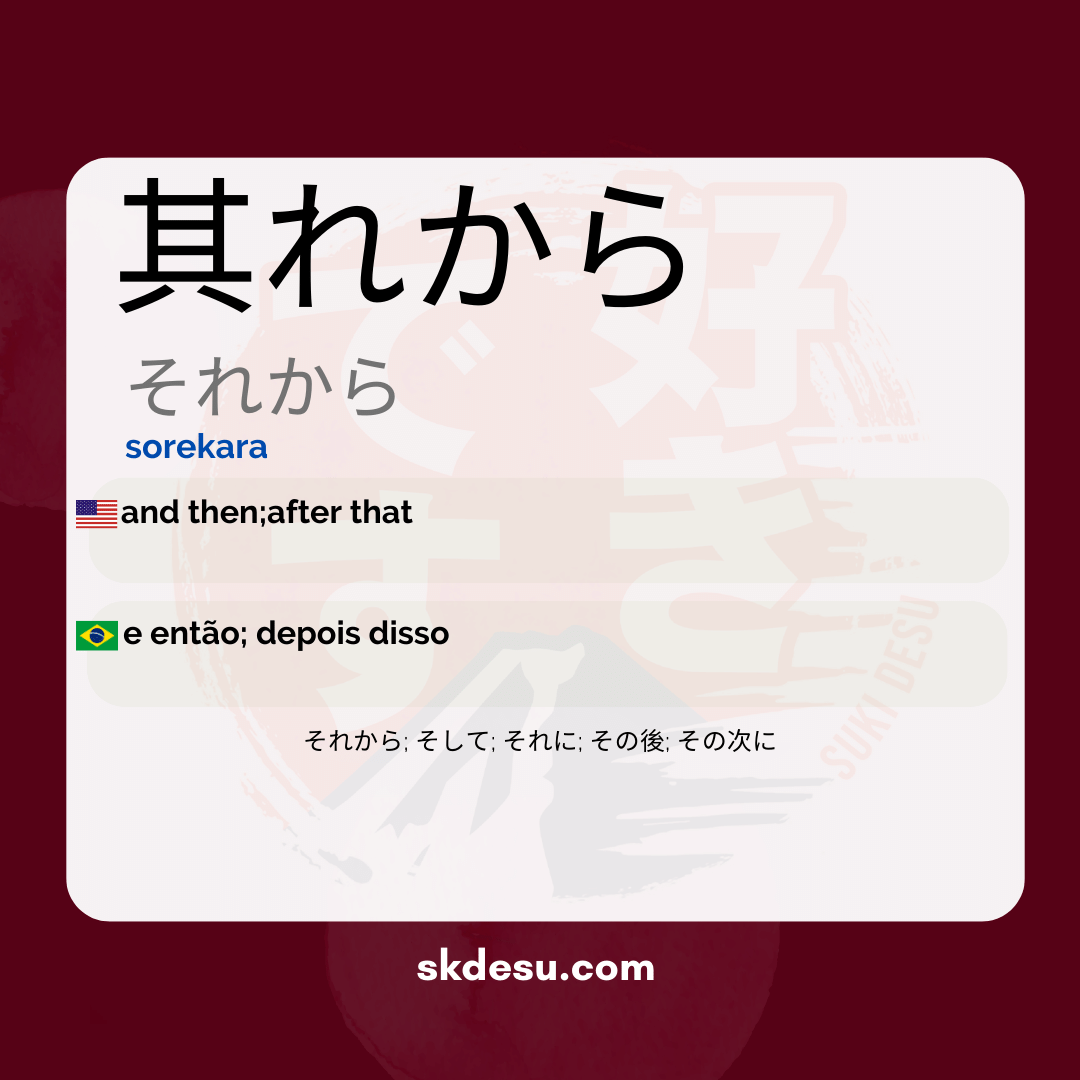Translation and Meaning of: 其れから - sorekara
The Japanese word 其れから [それから] is a common term in everyday life, but it carries interesting nuances for those learning the language. If you have ever wondered about its exact meaning, how to use it correctly, or even its origin, this article will clarify those questions. We will explore everything from the basics to cultural details that make this expression unique in Japanese.
In addition to being a useful word for connecting ideas, 其れから also frequently appears in dialogues, animes, and even in formal texts. Here at Suki Nihongo, our goal is to provide accurate and practical explanations so that you not only memorize but understand how to apply this term in real situations. Shall we begin?
Meaning and usage of 其れから
In direct translation, 其れから means "after that" or "and then." It is used to indicate a sequence of events, smoothly connecting actions or ideas. For example, in a narrative, you can use it to continue a story without needing to repeat unnecessary information.
What's interesting is that, although it seems simple, 其れから has a different weight than other conjunctions like そして (and also) or その後 (after). While these may be more neutral, 其れから carries a more colloquial and direct tone, being preferred in informal conversations or when one wants to keep the rhythm of the dialogue.
Origin and writing of the term
The composition of 其れから comes from the kanjis 其れ (this, that) and から (particle indicating origin or starting point). Together, they form the idea of "from that," which makes sense in its use as a temporal marker. It is worth noting that in modern writing, it is common to see the hiragana form それから, especially in less formal texts.
Interestingly, the kanji 其れ is an archaic character that rarely appears alone in contemporary Japanese. It has been preserved in certain fixed expressions like this one, giving a slightly literary tone even when used in everyday contexts. This duality between formality and everyday life is one of the characteristics that makes Japanese so fascinating.
Practical tips for using 其れから
To better memorize this word, try associating it with situations where you need to tell a story or explain a sequence of steps. For example, when describing your day, using それから between each activity helps to create a natural flow, similar to "and then" in Portuguese.
Another tip is to pay attention to how characters in animes or dramas use this expression. It often appears when someone is recounting events or giving explanations. This repetitive context helps to reinforce not only the meaning but also the correct intonation, which tends to be softer than in other conjunctions.
Vocabulary
Expand your vocabulary with related words:
Synonyms and similar words
- それから (sorekara) - So, from now on; used to add information or events in sequence.
- そして (soshite) - And then; used to connect sentences or events logically.
- それに (soreni) - Furthermore; used to add an additional point that complements the previous one.
- その後 (sonogo) - After that; it refers to a specific moment following a previous event.
- その次に (sonotsugi ni) - Next; indicates the next thing or event that happens after the previous one.
Related words
Romaji: sorekara
Kana: それから
Type: noun
L: jlpt-n1, jlpt-n5
Translation / Meaning: and then; after that
Meaning in English: and then;after that
Definition: So from this point on.
Quick Access
- Vocabulary
- Writing
- Sentences
How to Write in Japanese - (其れから) sorekara
See below a step-by-step guide on how to write the word by hand in Japanese. (其れから) sorekara:
Example Sentences - (其れから) sorekara
See below some example sentences:
Nenhum resultado encontrado.
Other Words of this Type: noun
See other words from our dictionary that are also: noun

